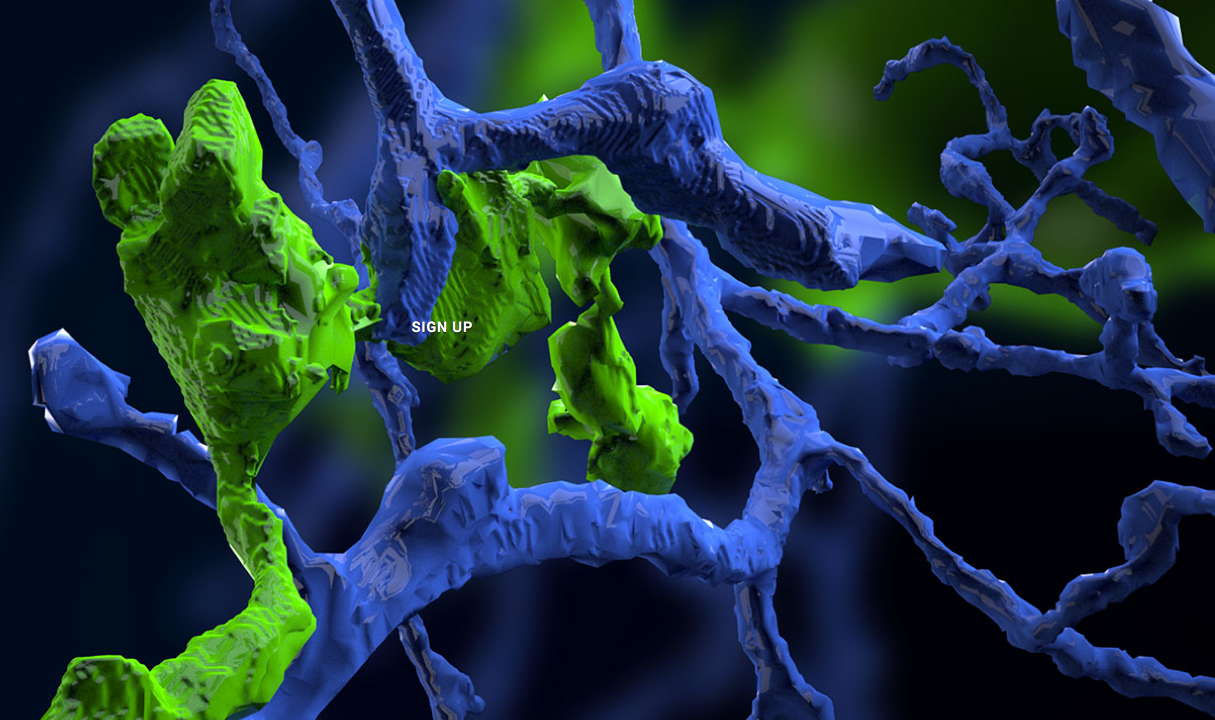Science News
Mapping Brain Neurons
January 15, 2014

Kira Hammond
We live in a world of instant gratification. You can now have most anything delivered to your door, connect with friends on social media and receive world news updates every minute on your phone. But what if your job entailed an assignment projected to take 1.5 million years to complete? How could you possibly feel instantly gratified with such a monumental task?
Sebastian Seung’s team at MIT encountered this exact problem. Tasked with mapping neural networks, the information superhighway of a brain, the team estimated that it would take 50 hours to map just one neuron. The brain has over 80 billion neurons, so time to break out the coffee! The team quickly realized that they needed both an efficient way to collect this massive data and better computational tools to order, analyze and interpret it. To accomplish this, they needed software that could both wrangle the tedious repetitive tasks and also allow for that unique, human ability to interpret contextual clues and make decisions.
Seung’s team tackled the challenge with something called “Augmented Intelligence,” essentially partnering computers and humans—a dream come true for any science fiction fan! In this project, the partnership took the form of a crowd-sourcing game called EyeWire. Amy Robinson, Creative Director with Seung’s group, summed up the approach: “Man plus machine is more powerful than either alone.”
EyeWire is an interactive game where you can help connect neurons accurately by using 2D image data of a mouse retina (a part of the eye). The game, which requires human engagement, helps train the software to make more accurate decisions in the future. Essentially you’re error checking for HAL’s benevolent younger cousin. The algorithm used in EyeWire looks for differentiation in tiny 4.5 micron cubes of brain tissue, mapping out the connections between neurons which in turn generates a highly accurate 3D model. Training the software will help scientists discover better computational tools and algorithms in the future, and this will be helpful for many types of scientific applications.
Why should we care about mapping 80 billion brain neurons? “Everyone has a brain, so EyeWire is personally relevant to everyone,” says Robinson. At its core, the project simply raises the bar of common knowledge about the brain for everybody. “Neuroscience is getting sexier by the day,” Robinson quips.
She hopes interacting with EyeWire will inspire more individuals to get involved in science. Robinson sees a strong need for programmers, hackers and other techno wizards to leverage their computation processing and coding expertise to the scientific community. With their novel approach making neuroscience accessible, EyeWire has attracted more than 100,000 players, and it's just over 1-year -old. Why not join the fun?
Kira Hammond is living the STEAM dream (Science Technology Engineering Art Math) working as a Media Specialist for the Visualization Studio at the Academy.
Image: eyewire.org, MIT